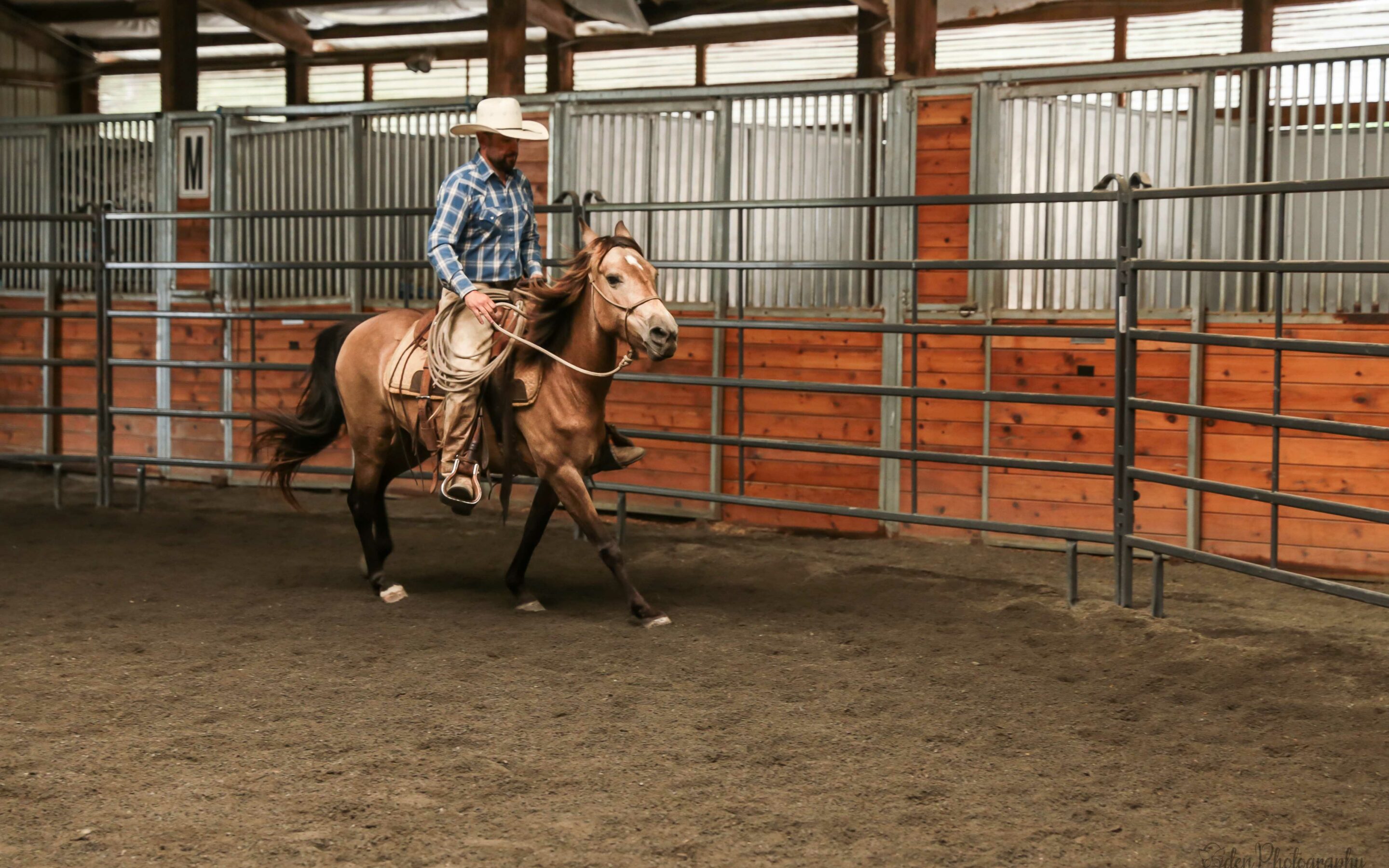Following in the footsteps of her two “older brothers,” Edward and Jacob, the horses she came in with, Esme has been started under saddle. This sweet little mare made it clear early on that she was going to take a bit more time, but that has never been an issue. After all, it just means getting to spend more time with Esme, and that’s never a bad thing!
Esme didn’t fuss much over having a rider on her back. Each horse is different of course, and have different experiences in their pasts that contribute to their present day responses, but we do our best in each case to prepare them for things like wearing a saddle and carrying a rider so that when the time comes for these things to actually happen, it’s not a huge deal.
Joel put the first ride on Esme, before passing the reins to Terry. Riding a colt is a very different experience than riding a broke horse – to avoid getting into a wreck and confusing the horse, the rider must simply ‘go with’ them as they move out. I don’t think the phrase ‘easier said than done’ even applies here, because I don’t think it is either easily said or easily done. Gripping and squeezing a horse, what I would argue are two very common and innate moves we humans tend towards as the thousand pound creature below us starts to move, sends mixed signals. So the best thing to teach your legs to do is to be inactive, to flop there like two noodles, meaning nothing to the horse when you don’t intend them to. It is easy to get in a horse’s way, and for those first rides especially, it is important to stay out of it.
Often, during those first rides, the horse and rider combination will often be flagged up through the gaits by a third party. This is also for the horse’s benefit, to keep them soft off the ask, so that the communication is very clear. The first ask would be with the seat, where the rider sits ahead, and the horse understands that means go. Legs come after, but there is always a clear progression. For horses who are dull or just learning, having someone with a flag to help the ask means the release for the horse can come a lot sooner, therefore making the message a lot more clear. By the time they have a rider, the horse is already very familiar with a flag’s meaning, the feel of a person telling them to increase their energy, so it typically takes very little to tip the horse up into the next gait when aided by someone on the ground. That way the rider can focus on being clear about their ask versus overly focused on getting it done.
I digress – all of this to say that for her first rides, Esme was a rockstar. No shenanigans, no real fuss. Patience with her riders – what more can you ask from a girl?


